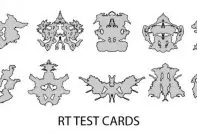The Minnesota Multiphasic Personality Inventory is also called MMPI-2. It’s the most popular clinical assessment tool used by psychologists and psychiatrists at present. The tool was first developed in late 1930s by psychiatrist J.C. McKinley and Starke R. Hathaway at the University of Minnesota, hence the term, Minnesota Multiphasic Personality Inventory.
Applications of MMPI-2
The test was initially designed to test people for their mental health issues, as well as assess their personality traits and psychopathology. Even though this tool was not designed for non-clinical uses originally, it has been found to be more commonly used in both clinical and nonclinical environments.
Other than the clinical environment, the test is also found to be used in legal cases, custody disputes, criminal defense, and so on. This testing tool has also been used as a measuring instrument for various professions, especially in case of high risk jobs. MMPI-2 has also been practiced in analyzing the effectiveness of treatment programs like substance abuse programs.
Administering MMPI-2
This testing tool is administered in one of two forms at present. MMPI-2 is the traditional version which comprises of 567 true/false questions. The other form is the MMPI-2-RF, a newer version established in 2008. This test only comprises of 338 true/false questions, and it takes half the time to complete it, which is 30 – 50 minutes to 60 – 90 of MMPI-2.
Because of MMPI-2’s familiarity with the psychologists, it’s still the most widely used test. Also, it offers larger research base.
Additionally, there is also another version of the test, which has been designed exclusively for teenagers. It’s called MMPI-A.
The MMPI testing tools are considered to be a protected psychological instrument, meaning it can only be given and interpreted by a trained psychologist. The test is not available online, as it’s a copyrighted property of the University of Minnesota, and a certain fee must be paid in order to use the test. Even though the test has been programmed into computers these days, it’s a must that that psychological testing is done by a psychologist conducting the testing, based on the subject’s history and present psychological status.
10 Scales of the MMPI
| Scale | Abbreviation | Description | No. of items |
|---|---|---|---|
| 1 | Hs | Hypochondriasis | 32 |
| 2 | D | Depresssion | 57 |
| 3 | Hy | Hysteria | 60 |
| 4 | Pd | Psychopathic Deviate | 50 |
| 5 | MF | Masculinity/Femininity | 56 |
| 6 | Pa | Paranoia | 40 |
| 7 | Pt | Psychasthenia | 48 |
| 8 | Sc | Schizophrenia | 78 |
| 9 | Ma | Hypomania | 46 |
| 0 | Si | Social Introversion | 69 |
Scale 1 – Hypochondriasis
There are 32 items on this scale which concern physical well being and somatic symptoms. As the term suggests, the scale was designed to administer the symptoms of hypochondria. Additionally, it’s also used to analyze neurotic concerns over bodily functioning.
Scale 2 – Depression
This scale consists of 57 items and is used to evaluate clinical depression, characterized by lack of hope, poor morale, etc.
Scale 3 – Hysteria
This scale contains 60 items and there are five major items measured on this scale.
- Shyness
- Headaches
- Poor physical health
- Neuroticism
- Cynicism
Scale 4 – Psychopathic Deviate
It contains 50 items and deals with measuring social maladjustment, self alienation, boredom and absence of strongly pleasant experiences.
Scale 5 – Masculinity/Femininity
Containing, 56 items, this scale measures how strongly is a person inclined towards stereotypical masculine or feminine roles. It was originally developed by the author to identify the homosexual tendencies, but it didn’t work as planned.
Scale 6 – Paranoia
This scale contains 40 items and measures paranoid and delusional thoughts.
Scale 7 – Psychasthenia
This scale is more reflective of OCD, obsessive compulsive disorder, as it was designed to measure a subject’s inability resist specific actions or thoughts, even though they are not adaptive. It contains 48 items.
Scale 8 – Schizophrenia
Characteristics like lack of interest, sexual difficulties, identity crisis, difficulties in concentration, peculiar perceptions, and disturbing questions of self worth are measured on this scale with 78 items.
Scale 9 – Hypomania
This scale contains 46 items, and is used to measure milder degrees of excitement, grandiosity, overactivity both cognitively and behaviorally, and egocentricity.
Scale 0 – Social Introversion
The scale 0 was developed later on in order to measure a person’s tendency to interact or withdraw from socializing, making contacts with other people, and baring responsibilities. This scale contains 69 items.
Validity Scales of the MMPI-2
L Scale
It’s also called lie scale, and people scoring high on this scale portray themselves in the most positive manner despite the shortcomings. It has been found that well-educated people from higher social classes score lower on this lie scale.
F Scale
The attempts of the subject at faking good or bad are detected through this scale. The questions are proposed in such a way that the test-takers contradict themselves in their responses. Those scoring high on this scale are either trying to appear better or worse than their true self.
K Scale
It’s also referred to as the defensiveness scale, and is the less obvious way of detecting the subjects trying to showcase themselves as better than they are. Like the L Scale, well educated people and those from higher socio-economic status tend to score higher.
? Scale
It’s referred as cannot say scale. This validity scale is the number of items left unanswered. But, according to the MMPI manual, any test with over 30 unanswered questions should be considered invalid.
TRIN Scale
It means True Response Inconsistency Scale, and has been designed to detect inconsistent answers from subjects. 23 paired questions opposite to each other are included in this validity scale.
VRIN Scale
It refers to Variable Response Inconsistency Scale, and like the TRIN scale, it’s also used to measure inconsistency from the patients.
Fb Scale
It’s also called the back F scale and has 40 items. Sometimes, high score on this scale indicates that the patient simply answered the questions randomly.
Scoring and Interpretation
Scores on various scales of the MMPI-2 and the MMPI-2-RF do not really represent how good or bad someone has done on the test, and neither do they represent the percentile rank. The test is merely the analysis that looks at relative elevation of factors when compared to the various norm groups studied.
Scores read on the scales are raw and they are transformed into standerized metric known as T-scores. (Standard Deviation equals 10, and the mean is 50). T-scores help to make the interpretation easier for clinicians.
Test purchasers looking to purchase the MMPI/MMPI-2/MMPI-2-RF are required to prove their worthiness to the test manufacturers and publishers.



